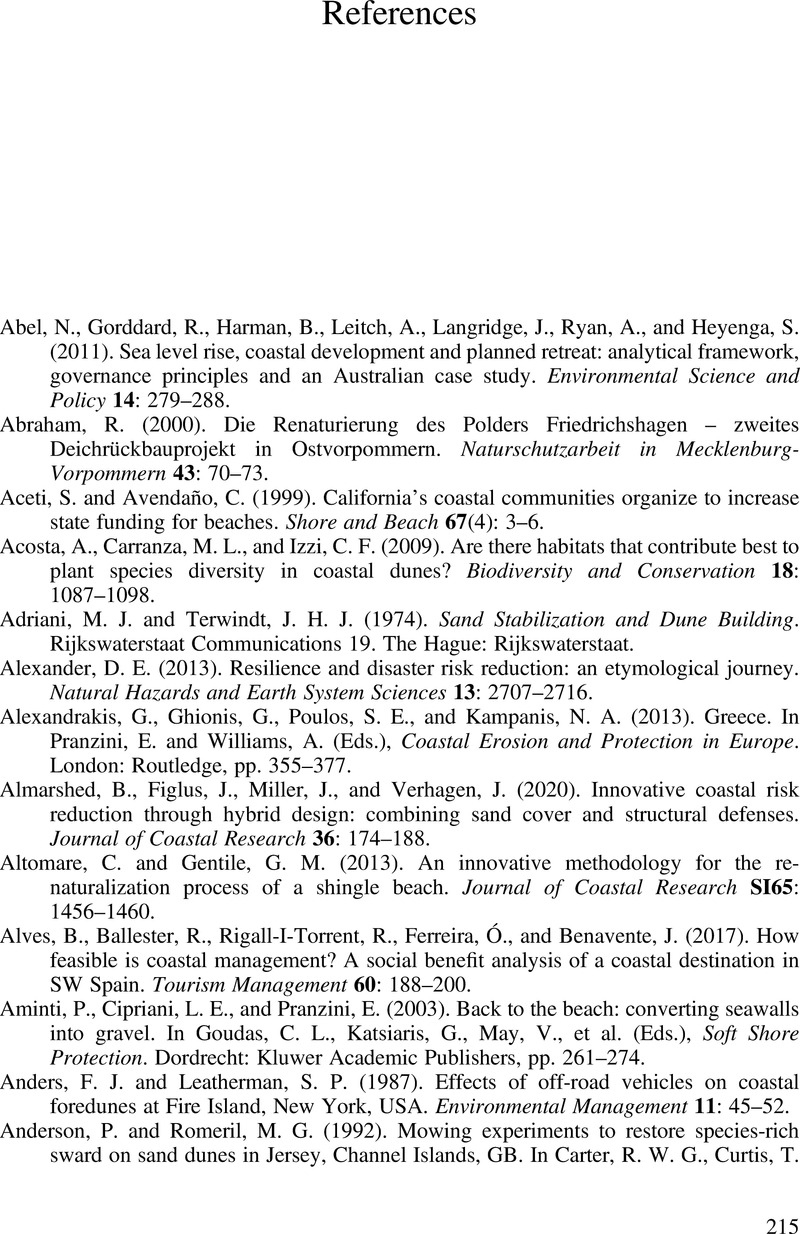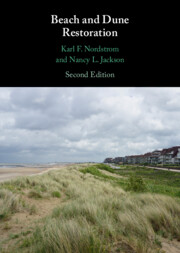Book contents
- Beach and Dune Restoration
- Reviews
- Beach and Dune Restoration
- Copyright page
- Contents
- Contributors
- Preface
- Acknowledgments
- 1 The Need for Restoration
- 2 Beach Nourishment and Impacts
- 3 Dune Building Practices and Impacts
- 4 Restoring Processes, Structure, and Functions
- 5 Altering or Removing Shore Protection Structures
- 6 Options in Spatially Restricted Environments
- 7 Stakeholder Interests, Conflicts, and Cooperation
- 8 A Locally Based Program for Beach and Dune Restoration
- 9 Research Needs
- References
- Index
- References
References
Published online by Cambridge University Press: 09 December 2021
- Beach and Dune Restoration
- Reviews
- Beach and Dune Restoration
- Copyright page
- Contents
- Contributors
- Preface
- Acknowledgments
- 1 The Need for Restoration
- 2 Beach Nourishment and Impacts
- 3 Dune Building Practices and Impacts
- 4 Restoring Processes, Structure, and Functions
- 5 Altering or Removing Shore Protection Structures
- 6 Options in Spatially Restricted Environments
- 7 Stakeholder Interests, Conflicts, and Cooperation
- 8 A Locally Based Program for Beach and Dune Restoration
- 9 Research Needs
- References
- Index
- References
Summary

- Type
- Chapter
- Information
- Beach and Dune Restoration , pp. 215 - 270Publisher: Cambridge University PressPrint publication year: 2021



